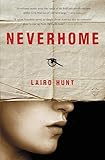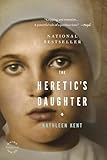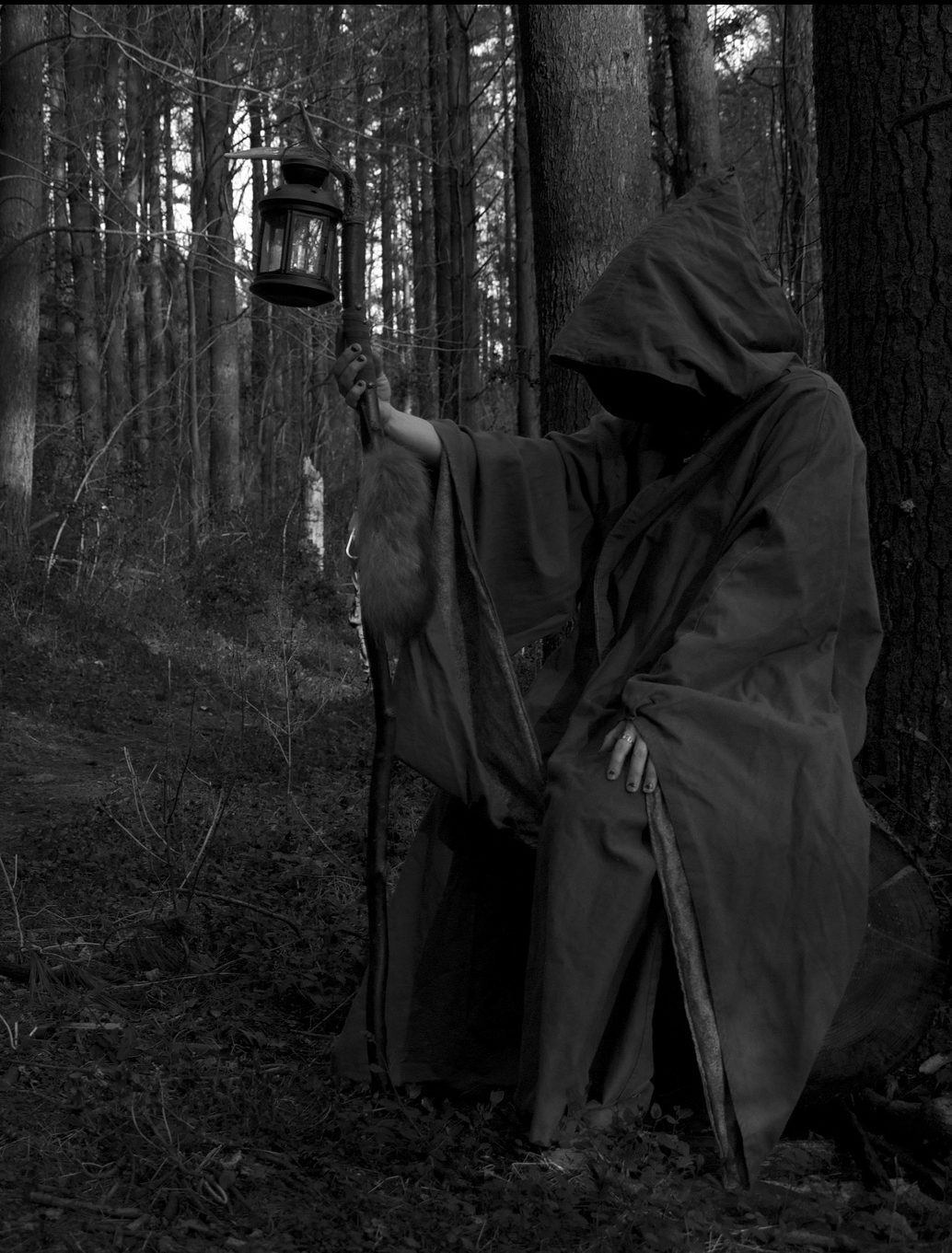The concept of the witch has figured prominently, not only in American history but in American literature as well. From Cotton Mather’s cautionary essays to Nathaniel Hawthorne to Arthur Miller, readers have been held in thrall by accounts of accused practitioners of dark magic, primarily women. Vilified and persecuted, “witches” were often portrayed in earlier novels as confederates of the devil—evil, ugly and terrifying. In more modern-day novels the witch has been transformed into a powerful, often majestic figure, capable of both creative and destructive magic, and unmoored from patriarchal judgement and censorship. She is a force of nature, and the possessor of ancient healing arts.
Laird Hunt: What was your earliest encounter with witches?
Kathleen Kent: Thanks to my maternal grandmother, I had a unique introduction to the history of “witches” and, in particular, the Salem Witch Trials. When I was quite young I was told that I was the 10th-generation descendent of Martha Carrier, one of 19 men and women hanged in Salem for the crime of witchcraft in 1692. My only perspective before that had been what was usual for most children exposed to the Halloween-ish parodies of the supernatural: scary, unwholesome, devil-worshipping women who flew around on broomsticks, frightening peasants and livestock alike. When I asked my grandmother if Martha Carrier had truly been a witch, she told me, “There are no such things as witches, Sweetheart, just ferocious women.” From that moment on I became fascinated with the true history of the accused witches, not just in America but in Europe as well. I read everything I could find in the historical records about Martha Carrier, and she was truly a ferocious woman. After being asked by her judges during the witch trials if she had ever seen the devil, she responded, “The only devils I have ever seen are those sitting in judgment before me!” It started me on a lifelong quest to discover how the concept of the force-of-nature female—who in ancient history often served as a healer and a wise woman—became relegated to the role of evil sorceress, poisoner, seducer of men, and spoiler of crops.
What were your earliest impressions of what a witch was?
LH: Perhaps before I answer that I should relate something that I think will be of interest to you. When my aunt, Linda Wickens, who among many other talents is an expert genealogist and the family historian, learned what I was writing about, she sent me the chilling account of one of our own ancestors—my 9th great-grandmother, Elizabeth Phelps, of Andover—whose incurable fever led to the conviction and death sentence in Salem of Ann Alcock Foster. During Foster’s trial, after considerable coercion resulted in her confessing to witchcraft, she implicated Richard Carrier, who I believe was your ancestor’s son, in evildoing. I should note that it is not at all clear that Elizabeth Phelps, very ill at the time, was directly involved in getting Foster arrested for witchcraft. Indeed, Phelps’s husband seems to have been much more central in that regard. But the fact remains that my ancestor was a part of the story and not on the right side of things. The complexity of those events is so intense.
Foster only confessed to witchcraft in court when her own daughter, also accused, pointed the finger at her to try and avoid punishment. Foster died in prison before she could be hung. My ancestor died of her fever around the same time. Death, always around the corner in Puritan New England, must have seemed omnipresent during those grim days.
My own first memory of witches was from a British television show I watched when I was far too young in the 1970s. In it, a young nanny is revealed to be a killer. Her weapon of choice is a knitting needle. I cannot remember quite how magic figured in the program, but it was present, and it was dark, and the satisfied smile the nanny wore as she worked her needles was terrifying. So for me the notion of the witch has always been linked to the idea that the intimate, the familiar, the everyday, the safe is anything but. I wonder if you could talk a little about the ways in which Martha Carrier was ferocious. Ferocity is what links the female narrators of the last four books I’ve written, and it never fails to amaze me how frightening the ferocity of women is to so many societies across time and space.
KK: That is so fascinating! And isn’t it interesting that your aunt is your family historian and, like my grandmother, gave you knowledge of your personal history. Women are often the lamp bearers in this regard—the keepers of the oral traditions and ancient legacies. Richard Carrier, whom you mentioned, was Martha’s oldest son. He was arrested to compel his mother to admit to practicing witchcraft. He refused to do so, until he was tortured, and then confessed to the trial judges that, not only was his mother a witch, but that he practiced magic as well. The irony is that had she confessed to being a witch, she probably would have escaped the hangman’s noose.

 Your female narrators, as in Neverhome and The Evening Road, are indeed ferocious, which, to me, means not only physical prowess, but a willingness to buck convention, to exist outside the boundaries of what’s considered culturally appropriate for women. There is bravery in this, but also it speaks to a woman’s righteous anger as a motivating force, which can make quite a few people uncomfortable. I think it’s particularly illuminating that women throughout history who have taken on the mantle of leadership, or even ownership over their own fates, were suspected, or accused, of witchcraft. Joan of Arc was burned as a witch. And even today Hillary Clinton has been referred to as a witch, the word taking on a derogatory meaning synonymous with shrewish, destructive, and untrustworthy behavior. It’s also interesting to me that every culture—from Europe to the Middle East to Asia—has its own history of witches. In Italy “La Strega” is feared, but she’s also respected and sought after for healing remedies. In the Carpathian Mountains, people still anchor the corpses of suspected witches into their graves with heavy stones or sharpened stakes. It speaks to an ancient fearfulness of a woman’s intrinsic and profound power: the power to bring life into the world, or, as in Medea’s case, to eradicate it.
Your female narrators, as in Neverhome and The Evening Road, are indeed ferocious, which, to me, means not only physical prowess, but a willingness to buck convention, to exist outside the boundaries of what’s considered culturally appropriate for women. There is bravery in this, but also it speaks to a woman’s righteous anger as a motivating force, which can make quite a few people uncomfortable. I think it’s particularly illuminating that women throughout history who have taken on the mantle of leadership, or even ownership over their own fates, were suspected, or accused, of witchcraft. Joan of Arc was burned as a witch. And even today Hillary Clinton has been referred to as a witch, the word taking on a derogatory meaning synonymous with shrewish, destructive, and untrustworthy behavior. It’s also interesting to me that every culture—from Europe to the Middle East to Asia—has its own history of witches. In Italy “La Strega” is feared, but she’s also respected and sought after for healing remedies. In the Carpathian Mountains, people still anchor the corpses of suspected witches into their graves with heavy stones or sharpened stakes. It speaks to an ancient fearfulness of a woman’s intrinsic and profound power: the power to bring life into the world, or, as in Medea’s case, to eradicate it.
 In your new book, In the House in the Dark of the Woods, it feels as though you tapped into some very ancient lore, women as healers, women as destroyers. What inspirations were you drawing on to paint your narrative?
In your new book, In the House in the Dark of the Woods, it feels as though you tapped into some very ancient lore, women as healers, women as destroyers. What inspirations were you drawing on to paint your narrative?
 LH: It is interesting to think that the late 17th-century story you tell with such force in The Heretic’s Daughter and the slightly earlier Connecticut witch—or purported witch—activity I drew on when writing my own tale, as far away from the earliest 21st century as they might seem, have such ancient roots. I wonder if acute awareness of the ancient and maybe ultimately unknowable traditions you evoke so well, combined with the relative dearth of information about and awareness of those Connecticut trials that started in the 1640s, made my story swerve so emphatically out of history and into the twinned (at least here) space of fairy tale and horror. Having written about women contending with slavery, the Civil War and Jim Crow in the first three novels of the loose quartet I pointed to above, I had the definite sensation this time out that I was still writing about these things even as I fell backward, or plunged more fully, into the murkier territory of magic and malice in the 1600s. I suppose I see it as all interwoven, all these dark, glistening threads of our shared history whose ends reach deep into the past, and felt the need here more than ever to recognize, as you put it so beautifully, the “lamp bearers” (and perhaps breakers) as being at the center of it all.
LH: It is interesting to think that the late 17th-century story you tell with such force in The Heretic’s Daughter and the slightly earlier Connecticut witch—or purported witch—activity I drew on when writing my own tale, as far away from the earliest 21st century as they might seem, have such ancient roots. I wonder if acute awareness of the ancient and maybe ultimately unknowable traditions you evoke so well, combined with the relative dearth of information about and awareness of those Connecticut trials that started in the 1640s, made my story swerve so emphatically out of history and into the twinned (at least here) space of fairy tale and horror. Having written about women contending with slavery, the Civil War and Jim Crow in the first three novels of the loose quartet I pointed to above, I had the definite sensation this time out that I was still writing about these things even as I fell backward, or plunged more fully, into the murkier territory of magic and malice in the 1600s. I suppose I see it as all interwoven, all these dark, glistening threads of our shared history whose ends reach deep into the past, and felt the need here more than ever to recognize, as you put it so beautifully, the “lamp bearers” (and perhaps breakers) as being at the center of it all.



 I drew as much on works like Cynthia Wolfe Boynton’s Connecticut Witch Trials and Jules Michelet’s La Sorcière as I did on works of feminist theory like Hélène Cixous’s “The Laugh of the Medusa” and Victoria Nelson’s fascinating discussion of chaos and Dionysian excess, as opposed to Apollonian order, in The Secret Life of Puppets, not to mention Angela Carter’s The Bloody Chamber. Fable and fairy tale and the oldest initiatory stories were always in the mix as well. I have ever been partial to the versions that end both badly and interestingly. How about you? What were you drawing on and plugging into when you wrote The Heretic’s Daughter?
I drew as much on works like Cynthia Wolfe Boynton’s Connecticut Witch Trials and Jules Michelet’s La Sorcière as I did on works of feminist theory like Hélène Cixous’s “The Laugh of the Medusa” and Victoria Nelson’s fascinating discussion of chaos and Dionysian excess, as opposed to Apollonian order, in The Secret Life of Puppets, not to mention Angela Carter’s The Bloody Chamber. Fable and fairy tale and the oldest initiatory stories were always in the mix as well. I have ever been partial to the versions that end both badly and interestingly. How about you? What were you drawing on and plugging into when you wrote The Heretic’s Daughter?
KK: I love the expression that you used—“murkier territory of magic and malice”—which, for me, seemed easier to channel when I was writing about 17th-century New England than, say, 19th–century Texas. There were so many societal contrasts and opposing forces at work in the Colonial wilderness, which gave the story in The Heretic’s Daughter so much narrative tension. The Puritans were a European people who ostensibly came to the New World to escape religious persecution, yet they were violently opposed to other religious groups, such as the Anabaptists and the Quakers. They were self-described “saints,” yet they were incredibly fractious and litigious with their neighbors. They were mandated by law to attend church, yet the Colonial villages had many public houses and inns serving alcohol, and the court records are filled with accounts of adultery, theft, and violence of all sorts. There was no separation of church and state as we know it, and a Doctor of Law had to also be a Doctor of Theology, man’s law being made to copy, at least in theory, God’s law. In the Puritan mind, anything good that happened in life was divinely ordered; anything unwholesome, destructive or threatening—failing crops, dying livestock, sickness—came from the devil.
The witch trials of 1692 were a natural extension of these beliefs. Smallpox, increasing retaliation from Natives, and an impoverished town (Salem) left too long without any steadying, spiritual guidance were written about extensively by contemporary figures who detailed in increasingly hysterical terms about the “growing miasma of evil” that seemed to rise up from the ground like fog. This hysteria was further fanned by the prevalent attitude that women, especially women who were mentally unstable, ungoverned by a man, or a burden on society, were up to no good; natural confederates of the devil because of their innately weaker constitution and moral capabilities. The “dark magic” unleashed on the villages of the Colonies, described in the source book on witches, The Malleus Maleficarum, and as noted by the witch trial judges themselves, were also an outgrowth, they believed, of women’s unfettered rage and licentiousness, which to me is a harkening back to the fear of the chaos and Dionysian excess that you referred to earlier.
I traveled extensively through New England while writing The Heretic’s Daughter because the description of location for me is as important as the character development. The physical setting in your latest book felt very substantive and important to the story. Were you writing about any place in particular or is the setting purely imaginative?
 LH: I lived in Western Connecticut as a boy and continued to spend considerable time there afterward with many a deep plunge into the woods along the way. The streams, ponds, bushes, dense trees, and lichen- and moss-covered rocks of the world my protagonist encounters are very much informed by those I spent so much time surrounded by in earlier years. Having said that, I got a first glimpse of the story on a cold, rainy walk in the woods near Cherry Valley, New York, where the landscape is less compacted, so that was in the mix, too. As were eastern woods glimpsed in movies and described in books and stories like Hawthorne’s powerful witch tale, “Young Goodman Brown,” or his other, longer witch tale of sorts, The Scarlet Letter, both set in that Colonial wilderness you refer to above.
LH: I lived in Western Connecticut as a boy and continued to spend considerable time there afterward with many a deep plunge into the woods along the way. The streams, ponds, bushes, dense trees, and lichen- and moss-covered rocks of the world my protagonist encounters are very much informed by those I spent so much time surrounded by in earlier years. Having said that, I got a first glimpse of the story on a cold, rainy walk in the woods near Cherry Valley, New York, where the landscape is less compacted, so that was in the mix, too. As were eastern woods glimpsed in movies and described in books and stories like Hawthorne’s powerful witch tale, “Young Goodman Brown,” or his other, longer witch tale of sorts, The Scarlet Letter, both set in that Colonial wilderness you refer to above.
I’m absolutely with you on the importance of description of location and have worked throughout my recent novels to draw heavily on actual, repeated engagement with place, whether that’s been rural Indiana, battlefields in Virginia and Maryland, or the Connecticut woods. Because, like you, I often work with the past, I have tried to be extra cognizant of how landscapes have changed and shifted as native peoples have been displaced, whole animal species like the passenger pigeon have vanished, and imported plants and trees and interloper insects have swept aside indigenous ones. The results have always been hybrids—spaces of recollection, research and imagination—which never quite were but, through the curious witchcraft of language and literature, somehow are.
Image: Flickr/jive667









